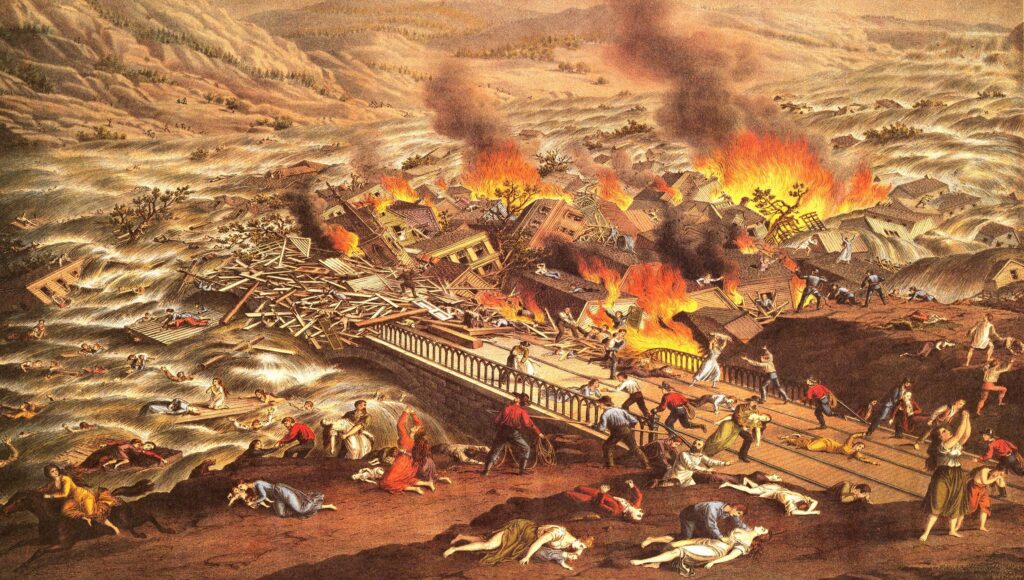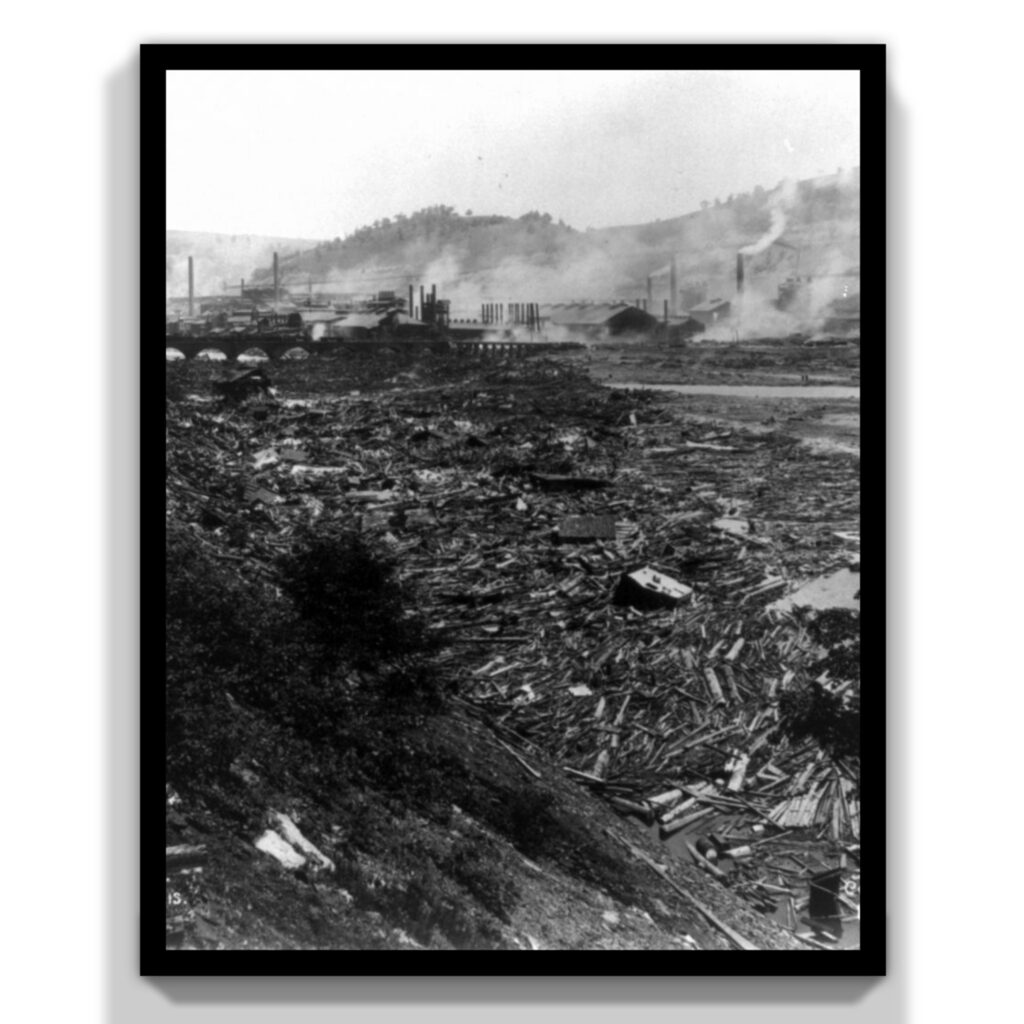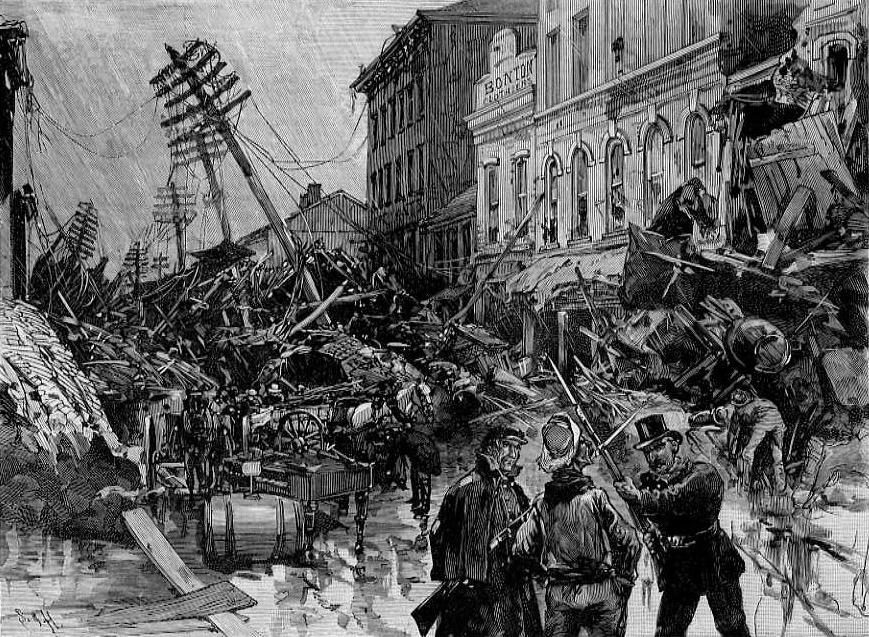Taking a Look Back at a Tragic Disaster That Shook the Nation
On May 31, 1889 — 135 years ago today — the city of Johnstown, Pennsylvania, was the site of one of the deadliest and most devastating natural disasters in American history. Known as the Johnstown Flood, this catastrophic event claimed the lives of over 2,200 people and left the thriving industrial town in ruins. Let’s take a closer look.

Public Domain, https://commons.wikimedia.org/w/index.php?curid=15216834
The Lead-Up
The tragedy began with a series of heavy rainstorms that had been pounding the region for several days. These storms caused the South Fork Dam, located about 14 miles upstream from Johnstown, to fail catastrophically. This massive earthen dam had been constructed in 1853 to create a recreational lake for a nearby resort. Over the years, the dam had fallen into disrepair and was not properly maintained, making it increasingly unstable.
As the rains continued, the water level behind the South Fork Dam rose to dangerously high levels. On the fateful day of May 31st, the dam finally gave way, sending a wall of water over 30 feet high rushing towards the unsuspecting town of Johnstown below. Eyewitness accounts describe a terrifying scene as the floodwaters tore through the city, sweeping away everything in their path.

Image by Langill & Darling — Public Domain
https://commons.wikimedia.org/w/index.php?curid=34088211
Massive Destruction
Homes, businesses, bridges and even a train full of passengers were all destroyed in a matter of minutes. The sheer force of the water was so powerful that it even swept away a massive iron bridge, twisting the metal structure into a tangled mess. In the aftermath, the town was left in complete devastation, with piles of debris and mud covering the landscape.
The death toll from the Johnstown Flood was staggering, with over 2,200 people losing their lives. Many of the victims were unable to escape the rapidly rising waters, while others were crushed by the immense force of the floodwaters. Entire families were wiped out, and the community was left to mourn the unimaginable loss of life.
A Stunned Nation
Immediately following, people across the U.S. and the world were shocked by the scale of the devastation and the loss of life. Relief efforts poured in from across the country, and the disaster became a rallying point for social and political reform.

1889 Drawing Published in Harper’s Weekly — Public Domain
https://commons.wikimedia.org/w/index.php?curid=10212060
The Johnstown Flood exposed the dangers of poorly maintained infrastructure and the need for greater regulation and oversight to prevent such catastrophic events from happening in the future.
Lasting Impact
The legacy of the Johnstown Flood continues to be felt today. The disaster served as a catalyst for the development of modern emergency management systems and disaster response protocols. It also played a significant role in the growth of the American Red Cross, which was instrumental in the relief efforts following the flood.

Image by Greg Hume – Own Work — CC BY-SA 2.5,
https://commons.wikimedia.org/w/index.php?curid=2993677
So there you have it. Today, the Johnstown Flood stands as a sobering example of the devastating consequences that can result from a combination of natural forces and human negligence. It is a tragic event that forever changed the course of American history and the lives of those who experienced it.
By Steven Roberts


